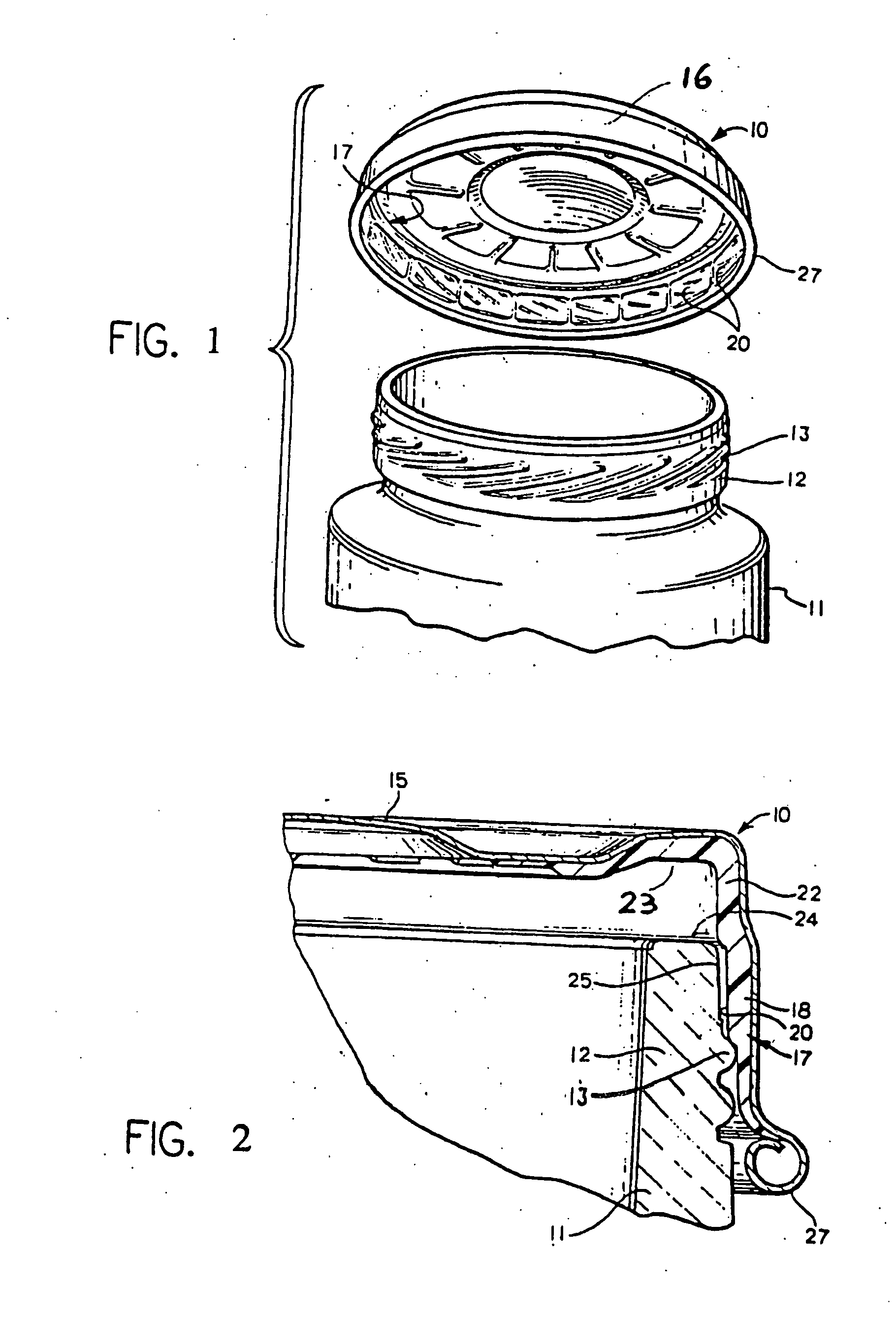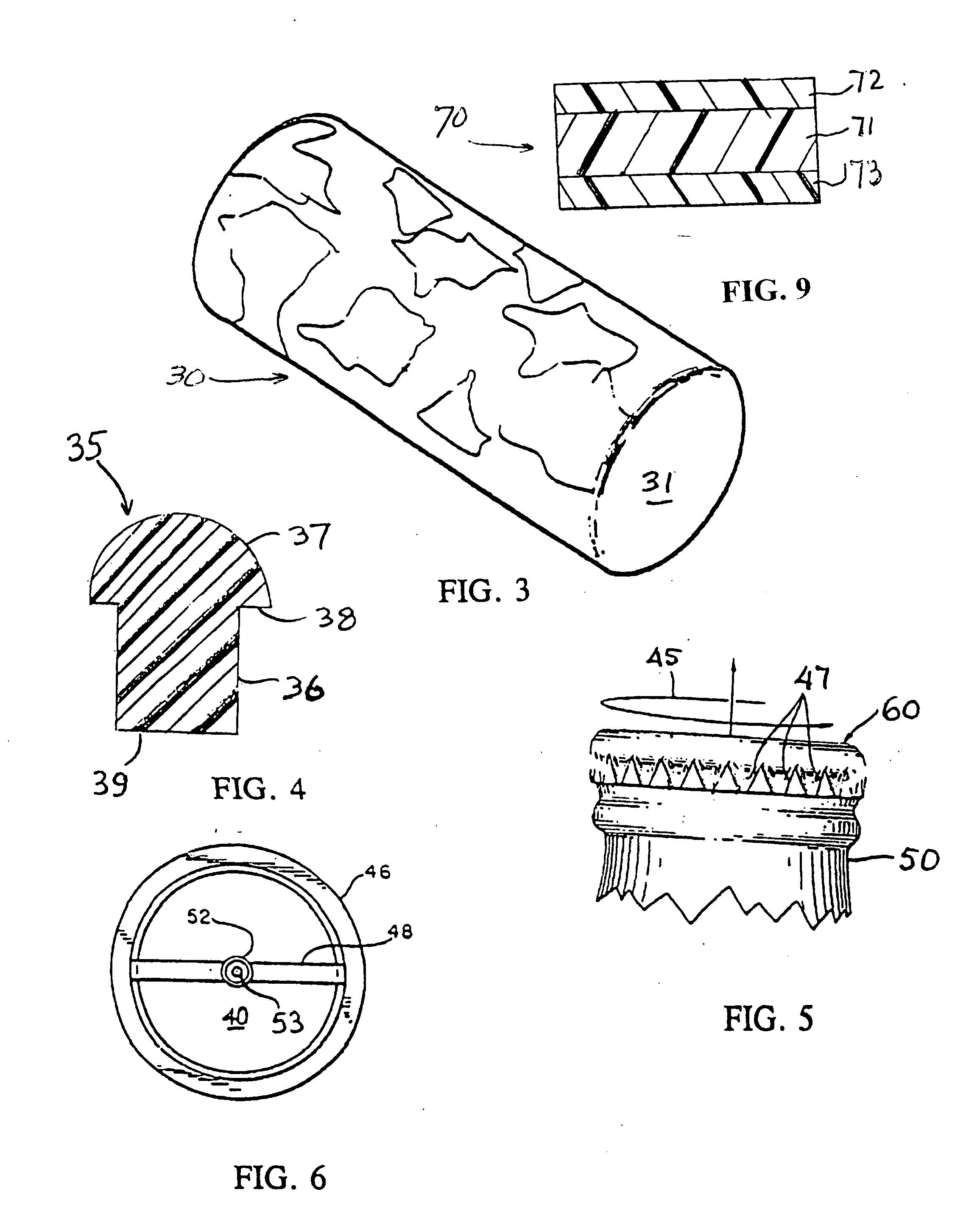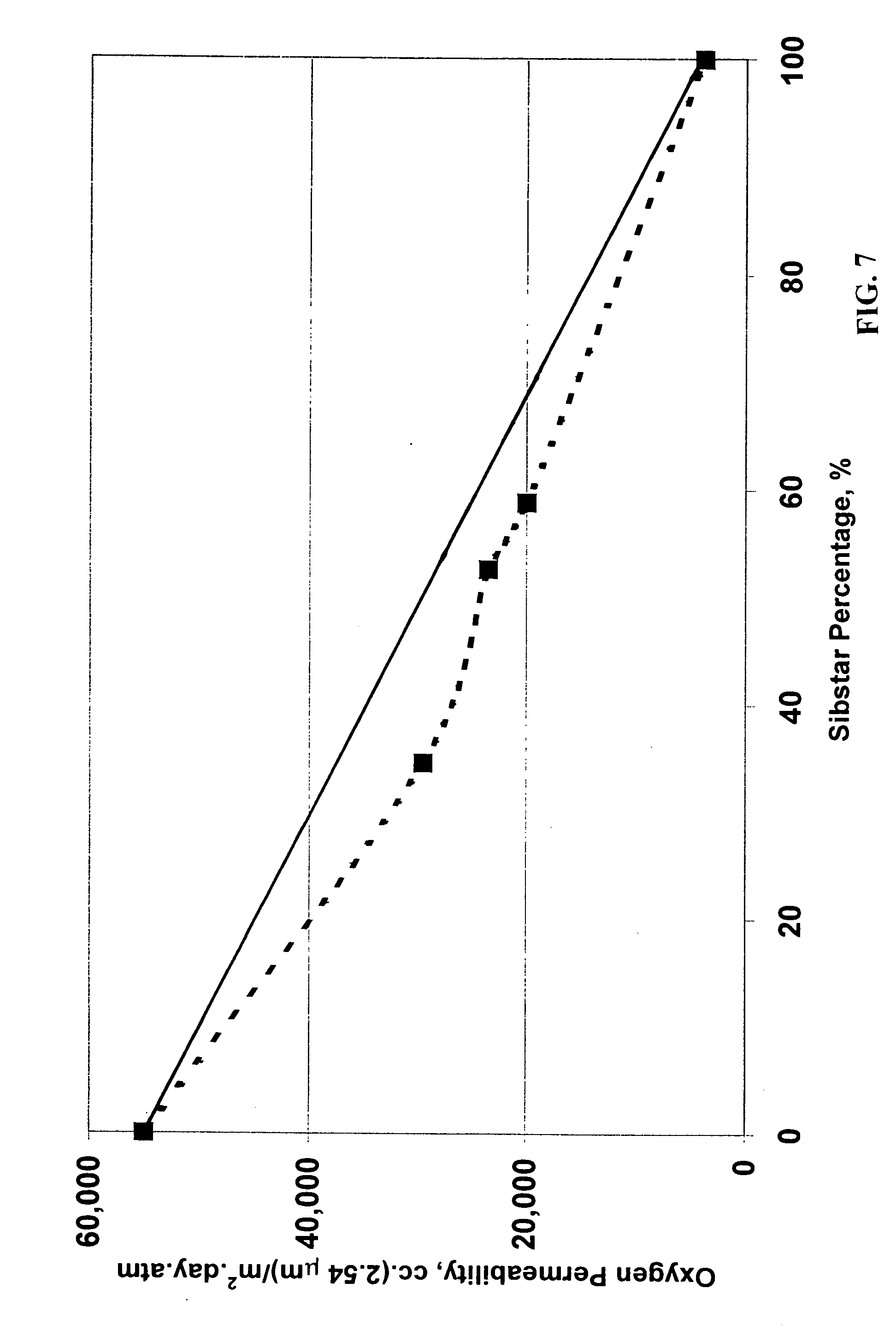Essentially gas-impermeable thermoplastic sealant
a thermoplastic sealant and gas-impermeable technology, applied in the field of essentially gasimpermeable thermoplastic sealants, can solve the problem that the sibs, per se, has an unsatisfactory high compression set above 70% at 70°
- Summary
- Abstract
- Description
- Claims
- Application Information
AI Technical Summary
Benefits of technology
Problems solved by technology
Method used
Image
Examples
Embodiment Construction
[0039] Moisture, inorganic gases such as oxygen, carbon dioxide, sulfur dioxide, ammonia and nitrogen, and organic gases such as methane and ethylene are among common gases which tend to leak either into or out of inadequately sealed containers and deleteriously affect contents of the containers because of the reactivity of the gases over a long period. Leakage of air into a container results not only in contact of oxygen with the product but also growth of living organisms such as bacteria. Oxygen is the most common detrimental gas because most solid and liquid foods are oxidized over time. Products are therefore sealed against leakage of such gases into the containers. Where a product is sealed under nitrogen, it is desirable to prevent the nitrogen from escaping. Thus the blended TPE is useful to form seals for bottle caps whether of the pressure-crimped or screw-on type; and for liners of cartons which by themselves are highly permeable to gases even under atmospheric pressure, ...
PUM
| Property | Measurement | Unit |
|---|---|---|
| weight ratio | aaaaa | aaaaa |
| weight ratio | aaaaa | aaaaa |
| thickness | aaaaa | aaaaa |
Abstract
Description
Claims
Application Information
 Login to View More
Login to View More - R&D
- Intellectual Property
- Life Sciences
- Materials
- Tech Scout
- Unparalleled Data Quality
- Higher Quality Content
- 60% Fewer Hallucinations
Browse by: Latest US Patents, China's latest patents, Technical Efficacy Thesaurus, Application Domain, Technology Topic, Popular Technical Reports.
© 2025 PatSnap. All rights reserved.Legal|Privacy policy|Modern Slavery Act Transparency Statement|Sitemap|About US| Contact US: help@patsnap.com



